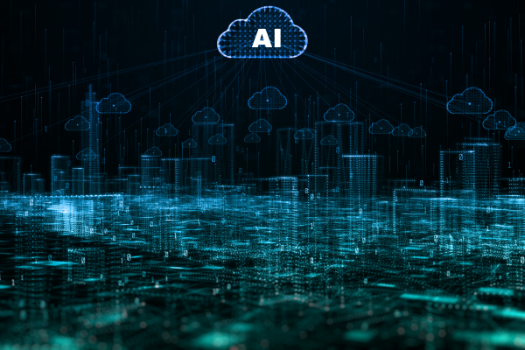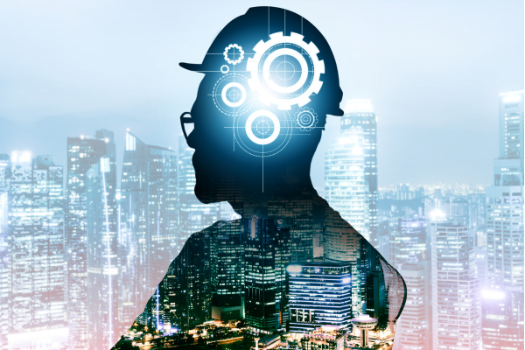.png)
AI-Driven BIM: Revolutionizing Construction Workflow
Introduction
AI-driven BIM is reshaping the construction industry, bringing new levels of efficiency and collaboration. Building Information Modeling (BIM) has long served as a central framework for construction projects, offering a digital model that integrates project details. Now, with the power of artificial intelligence (AI), BIM is moving to the next level. AI enhances BIM by automating tasks, predicting project outcomes, and optimizing construction workflows.
This integration of AI allows for faster project tracking, improved resource allocation, and better construction scheduling. AI-driven BIM streamlines processes that were once time-consuming, helping teams meet project milestones and stay within budget. In this blog, we’ll explore how AI-driven BIM is revolutionizing project management. We’ll look at its role in enhancing construction productivity, real-time tracking, and overall project success, offering construction companies a powerful edge in today’s competitive landscape.
Understanding AI-Driven BIM
AI-driven BIM combines artificial intelligence with Building Information Modeling to create smarter, faster, and more accurate construction processes. By integrating AI into BIM, teams can automate repetitive tasks, making workflows more efficient and freeing up time for strategic decision-making. AI-driven BIM uses machine learning algorithms to analyze vast amounts of construction data, uncovering insights that would be hard to find manually.

One of AI’s key roles in BIM is predictive analysis. AI scans and analyzes data on project timelines, costs, and resource needs, helping to forecast future project requirements. This allows construction teams to adjust schedules, allocate resources, and manage budgets more effectively. The predictive capabilities of AI also improve accuracy in design and planning, reducing the likelihood of errors that can lead to costly rework.
AI-driven BIM enhances construction scheduling, task management, and resource allocation by continuously learning from previous projects. With AI, BIM becomes more than a digital model—it’s a proactive tool that optimizes project outcomes by supporting data-driven decision-making.
The Impact of AI-Driven BIM on Construction Workflows
AI-driven BIM is transforming construction workflows by making them faster, smarter, and more efficient. One of the main advantages is its ability to automate time-consuming tasks, like data entry and project documentation, which frees up team members to focus on higher-priority activities. This efficiency in workflow management shortens project timelines and improves overall productivity.

AI-driven BIM also enhances collaboration. By providing real-time insights and centralized information, it enables teams to stay aligned throughout the project. This real-time tracking allows everyone, from project managers to on-site workers, to make informed decisions quickly, helping teams adapt to changes on the go. With instant access to updated data, coordination becomes smoother, which is essential for complex construction projects.
Another significant impact of AI-driven BIM is its ability to reduce errors and rework. AI tools can detect potential issues—like design clashes—early in the planning stage. For example, AI-driven clash detection identifies conflicts between structural and electrical designs, allowing adjustments before construction begins. Automated design optimization ensures that project designs are both efficient and functional.
By anticipating problems and suggesting solutions, AI-driven BIM minimizes costly rework, keeps projects within budget, and supports a more streamlined construction process. These capabilities are setting a new standard in construction workflows, enabling companies to achieve higher efficiency and reduce project complexities.
Benefits of AI-Driven BIM for Project Management
AI-driven BIM brings valuable advantages to project management by optimizing scheduling, resource allocation, and budget control. One of the primary benefits is streamlined scheduling. AI-powered BIM tools analyze task dependencies and resource availability, creating an optimized construction timeline that helps avoid delays. This precise scheduling allows teams to manage complex projects with confidence, knowing that each phase is aligned and well-coordinated.

Resource allocation also benefits from AI-driven insights. By predicting material needs and labor requirements based on past projects and real-time data, AI-driven BIM ensures resources are used efficiently. This leads to better distribution of materials and manpower, preventing shortages or overages that can disrupt workflow.
Another major advantage is cost savings. With AI-driven forecasts and the ability to make real-time adjustments, project managers can reduce waste and control costs more effectively. Accurate cost estimation and efficient resource use help keep projects within budget, minimizing financial surprises and enhancing construction budget management.
AI-driven BIM also improves communication across project teams. Centralized data and real-time updates allow stakeholders to access the latest project information, fostering a transparent environment where everyone is informed and aligned. This continuous, centralized access to project details strengthens collaboration and keeps workflows moving smoothly, ultimately making AI-driven BIM a critical tool for successful project management.
Challenges of Implementing AI-Driven BIM
Implementing AI-driven BIM in construction comes with several challenges. One major hurdle is data integration. AI relies on large, structured datasets to function effectively, and construction projects often involve various data sources that need to be unified. Managing this integration can be complex and time-intensive, especially for firms that lack established data management systems.

Another challenge is the high cost of setup and training. The initial investment in AI-driven BIM software, along with training teams to use it effectively, can be substantial. Smaller firms may find these costs prohibitive, especially if they are new to advanced technology.
Resistance to change is also a common obstacle. Shifting from traditional methods to AI-driven BIM requires a specialized skill set and openness to new workflows. Teams accustomed to traditional tools may struggle to adapt, slowing down the adoption process.
Overcoming these challenges requires strategic planning. Companies can start by investing in training programs that build technical skills and foster familiarity with AI tools. Gradual adoption strategies, where AI is introduced step-by-step, can also ease the transition. Additionally, selecting the right AI tools that fit specific project needs can enhance long-term success and make AI-driven BIM a valuable asset in construction.
Future of AI in BIM for Construction
The future of AI in BIM for construction holds exciting possibilities that promise to redefine industry standards. Predictive analytics will likely play a larger role, allowing real-time decision-making based on past data and ongoing project metrics. This will enable construction teams to foresee challenges, optimize resources, and improve efficiency.

AI also has great potential in promoting sustainability within BIM. By analyzing energy usage and material choices, AI can suggest greener alternatives and help achieve environmentally friendly construction practices. This supports the industry’s growing emphasis on sustainability and reduces the environmental impact of projects.
The integration of digital twins and machine learning will further enhance BIM’s capabilities. Digital twins—virtual replicas of physical buildings—paired with AI-driven insights can monitor and optimize building performance long after construction ends. This approach will allow real-time tracking and adjustments, leading to smarter, more sustainable buildings. Together, these advancements signal a future where AI-driven BIM becomes a critical force for innovation and efficiency in construction.